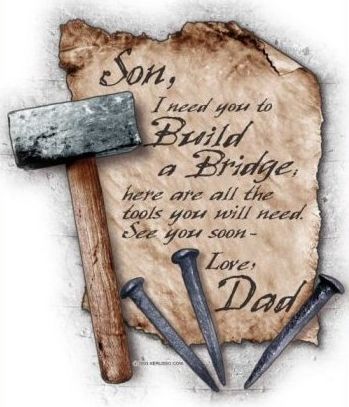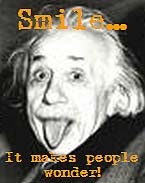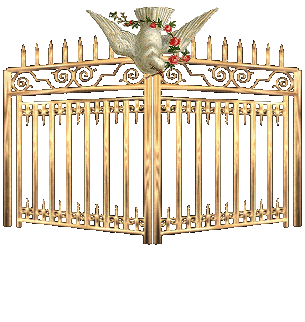


The Christmas star was it during HAN or during Three Kingdom period?
The following facts are cogent:
1.Roman empire was at the time concurrent with Han dynasty.Three Kingdom Period was concurrent with The Dark Age.Of Romance
2. Liu Pan of Han Dynasty procrates Liu Bei(first “king” )and Liu Shan as “the second and last king” of SHU-Han . Liu-Shan was an astrologer.
3. Shu means belonging as a accillary.
4.Kingdom Shu was actually called Shu-Han in full, because it was regarded as attachment to HAN by LIU BEI who was the relative of HAN.
5.This is literrally extracted from ChinaTravelGuide:
"As a loyal chancellor, Zhuge Liang never gave up the chance to realize Liu Bei's ambition - to restore the Han Dynasty and regain the former capital. He led Shu's army to attack Wei many times. However, during the last northern expedition, Zhuge Liang died of illness on the march."
[http://www.travelchinaguide.com/intro/history/three_kingdoms/shu-kingdom/]
6.Liu-Shan, another name GONG-SI 劉禪 (公嗣) which has come to close connotation of FATHER ABRAHAM.
Therefore the Christmas star as I read from the internet and and what I heard from the holy spirit that 200Years different in Chinese history is consistent . I believe that Christmas star appeared during Liu-Shan as the second and last king of Shu-Han of the THREE KINGDOM PERIOD. Jesus was born in 5BC and Liu-Shan was born in 217 AD. About Liu-Shan
Place of Birth: Zhou County, Zhou Prefecture (Presently Zuozhou in Hebei Province)Lifespan: AD 207 – 271 (64 Years)Titles: Crown Prince, Emperor of Shu, Lord of Anle, Lord of Peace and PleasureFamily: Liu Bei (father), Lady Gan (mother), Liu Feng, Liu Li, Liu Yung (brothers), Zhang Fei (father-in-law), Empress Sun (step-mother). The decendants of Shu could be LIU decendants. In my opinion they could be Hakka( especially The Kongsi people), a group of people who had the tendency of shifting around from north to south even migrate out of China into other parts of the world. Please note many antics uncovered scattered in China somehow or rather with speculation connected with HAN.
[ http://kongming.net/novel/writings/shu/]
*******************************************************






![]()
![]()
![]()
![]()
![]()
![]()
![]()
![]()
![]()
![]()
![]()
![]()
![]()
![]()
![]()
![]()
![]()
![]()
![]()
![]()
![]()
![]()
![]()
![]()
![]()
![]()
![]()
![]()
![]()
![]()
![]()
![]()
![]()
![]()
![]()
![]()
![]()
![]()
![]()
![]()
![]()
![]()
![]()
![]()
![]()
![]()
![]()
![]()
![]()
![]()
![]()
![]()
![]()
![]()
![]()
![]()
![]()
![]()
![]()
![]()
![]()
![]()
![]()
![]()
![]()
![]()
![]()
![]()
![]()
![]()
![]()
![]()
![]()
![]()
![]()
![]()
![]()

Please read this original article by the author , then enter the actual site for further study at the end of this article. .
Tombstone Carvings from AD 86: Did Christianity Reach China In the First Century? [02-20-03]
Wei-Fan Wang, Retired Professor, Nanjing Theological Seminary
China News Update, January 2003
By Wang Wei-fan, Retired Professor, Nanjing Theological Seminary
In 2001, I wrote an article entitled “Christian Spirit in Ancient China.”(1) which suggested the possibility that “the Gospel had reached China during the Eastern Han Dynasty.” (25-220 AD) (2) One of the basis of this assumption was the statement by Li Wenbin: “During the Eastern Han period, two Syrian missionaries came to China. Their purpose was to spread Christianity.”(3) Another basis was the discovery of an iron cross in Luling, Jiangxi Province in the Ming Dynasty during the reign of Emperor Hongwu (1368-1398 AD). Carved on the cross was a couplet:
Four seas rejoice o’er peace; iron rod splendors a cross;
Ten thousand folks for grace yearn; a thousand autumns incensed by golden urn.
The date of this relic was “the ninth year of Chi-wu, Eastern Wu.”(4) Chi-wu was the name for the fourth period of reign of Sun Quan who became King of Eastern Wu in the year 222 AD. “The ninth year of Chi-wu” was actually the 25th year of Sun’s reign, 222-246 AD). The fact that such a large iron cross existed, and that a Christian intellectual could compose a couplet with this degree of sophistication lead to the speculation that the Christianity must have been in China before Sun Quan’s reign. In other words, the Gospel could very well have been brought to China in the Eastern Han dynasty.
I. The Gospel Carved on Stone During the Han Dynasty, especially Eastern Han, carved stone objects were often used for burial. Furthermore, elaborate tombs were constructed with limestone, with carvings on the doors and walls of underground chambers. In June, 2002 a colleague from Xuzhou (in northern Jiangsu Province) informed me that the museum in this city contained many excavated carvings with Middle East cultural characteristics. So, with the hope of finding evidence of Christianity in Eastern Han China, I visited the Art Museum in Xuzhou. Later the church in Xuzhou (formerly a Presbyterian church within the Synod of Jiang-Huai) gave me a newly published book Xuzhou Han Stone Carvings compiled by the director of the museum, Mr. Wu Liuhua (published in Beijing, November 2001). Most of the picture illustrations on these pages are taken from this volume.
The first startling piece of art I came upon was a carving with fish and phoenix as symbols. (A)(5) The phoenix, also known as “eternal” or “everlasting” bird, was a symbol for resurrection in Egyptian myths. The Fish (ICQUS), meaning “Jesus Christ God’s Son our Savior,” was used by early Christians on their doors and tombs. The combination of these two symbols on the Han tomb may indicate the hope of Christians for salvation and resurrection by faith in Christ. To the left of this carving was the date: “The seventh day of the third month in the year of Yuan-he” – 86 AD. Yuan-he was the name of the reign of Emperor Zhangdi in Eastern Han. So the construction of this tomb was 550 years before the Nestorian monk Alopen reached Changan (today’s Xi’an) in 635 AD, and about 50 years after the mass persecution in Jerusalem, resulting 

in Christians being dispersed to other parts of the world.(6)
II. The Creation and the Fall One of the carvings seems to describe the creation story. (B)(7) On the top are “two great lights” of sun and moon, a big fish and a bird. On the right are wild beasts. The left are domestic animals such as donkey, horse and ox. The images are typical of Western Han art – exaggerated, flowing and lively – except for the two beasts with intertwining necks, which are in the style of Middle East art.

Another carving shows the temptation of Eve.(C) On this carving we read from right to left (in Chinese and Jewish order): the devil, serpent, Eve, the tree of discerning good and evil, the cherubim, then the sword (symbols of evil and deceit on the right; symbols of goodness and kindness on the left.) The seductive and crafty serpent is waving beautiful flowers to Eve while biting her left hand. At the same time Eve’s right hand is already picking the fruit from the tree. To the left of the tree we see the cherubim and the sword, flaming and turning, guarding the tree of life.
Two other carvings have figures like Adam and Eve leaving the Garden of Eden. The first one (D) shows a man and a woman wearing clothes made with animal skins. The woman’s skirt seems to have a design of snakes, while the man is holding a tool resembling a hoe. 


The second carving (E) depicts a man and a woman moving away from a locked gate. The woman looks sad and the man’s face has two sides, one side looking forward and the other side turning back as if reluctant to leave. Both of these carvings were excavated from the tomb of “Jiu nu dun” (which can mean “the mound of the ninth daughter”).
In this same tomb is also a stone pillar with a ferocious dragon (F), unlike the traditional Chinese dragon which stands for honor, majesty, dignity and transcendence. To have such a frightening dragon placed in the center of the tomb could mean that Chinese Christians in those days had identified the dragon with the Old Testament serpent as a monster, representing evil and darkness.(8)
III. The Passover Lamb Over the Gate A number of the limestone entrances to the Eastern Han burial chambers have carvings of fish and lamb. (G) which, for Christians, would mean “Christ Jesus the Savior” and the lamb of Passover saving the Israelites from death.

Some of the beams from the tombs have just the lamb (H) while others have both the lamb and the eternal bird (phoenix), combining salvation and resurrection. The fish and the lamb were seldom seen in traditional Chinese art. The phoenix in China was a symbol for prosperity and good luck, unrelated to resurrection.
An Eastern Han tomb discovered at Wang Shan had semicircular upper beams with two levels.(I)(6) The upper level describes “heaven” with the tree of life and the eternal bird; the lower level is “earth,” with two dragons bound by three chains. The tree of life and the eternal bird represent resurrection and everlasting life, while the dragons represents the ruler of demons.(10)
On another stone, a highly artistic piece, the dragon is bound by three chains.(27) There are other dragons, one imprisoned (J)(12) and guarded by swords from four directions, and another dragon with a broken leg (K)(13). Though different in style, these dragons have all departed from the traditional Chinese portrayal of this sacred creature.
IV. The Nativity It is common for carvings on Han tombs to illustrate activities of everyday life, and some seem to tell the story of the life of Christ. One of them may be the Christmas story, with wise men worshiping the Christ child (L). While the birds (and angels) are rejoicing above the shed, the human figures show reference and admiration. A wise man is offering a gift. On the ground is a vase, possibly containing myrrh? At the lower left of the shed is a little sheep.

A larger likely “manger scene” clearly shows the baby held on the lap of his mother.(M) This, too, has celestial beings above the roof, and wise men coming to pay homage.
A huge dragon seems to be over whelming to the small human figures below(N), as if Joseph, Mary and baby Jesus were threatened by the powerful and murderous Herod on their flight to Egypt. Kneeling behind the carriage are two women, bidding their sad farewell.
V. The Yi Vessel In the Xuzhou museum I saw a bronze container, also dating back to the Eastern Han period. (O)(14) The bottom is carved with two fishes and five loaves, plus the character “Yi.” In the Book of Records [one of the Five Classics which are considered part of the sacred scriptures of China], it was said that “the offering is to God; while the yi is used for offering by the emperor.” This container with the five loaves and two fishes could be a vessel for offering to God. The word Yi also means “sharing.” In the Book of Poetry [also part of the Chinese sacred scriptures] it says “To share with you.” It is not difficult to imagine that this was a vessel used by the early church in Eastern Han for sharing food and to celebrate the “love feast,” Holy Communion.
These speculations are the results of my initial research, made possible with the help of the Xuzhou Han Carving Arts Museum, and the assistance of the church in Xuzhou. It is important to note that Xuzhou is not the only place where Han stone carvings have been found. Several locations in Henan and Shandong provinces have sizable collections of these excavated stone carvings. As if these very stones are “crying out” for our attention, they deserve our serious study and research. The task will take years, requiring rigor and discipline. Eastern Han was the first period in history when many religions were introduced to China. In the Western Han period, Zhang Qian had explored the west and went on the Silk Road to “Da Qin which is today’s Syria. It is not difficult to trace the footsteps of the Gospel by way of the Silk Road to Eastern Han, from Jerusalem, Samaria and Syria, through what is today Iraq, Iran, Afghanistan, Xinjiang, Dunhuang to reach Changan (Xi’an). The ancient Christians had braved the long and arduous journey to reach our land. Therefore with gratitude we say: How beautiful are the feet of those who brought good tidings.
End Notes 
(1) See Jinling Theological Review., vol. 2, 2001, pp. 25-27
(2) Ibid. Eastern Han is a dynasty established by Liu Xiu, with Luoyang as its capitol. From 25-220 AD, the dynasty lasted only 196 years.
(3) A History of China by Li Wenbin
(4) From Wang Zhi-xin, A History of Chinese Christianity which quoted from A Record of Careful Thoughts by Li Jiugong of Ming Dynasty, and from “Poem of the Iron Cross” in Liu Zigao’s Collection of Poetry.”
(5) No. 12 of Xuzhou Han Stone Carvings, Xuzhou Museum of Han Carvings
(6) In Acts 8:1-4, the persecution took place about 35 AD, just before the conversion of Paul.
(7) Originally published in Wen Hui Bao (Daily), August 9, 2002
(8) Deuteronomy 32:33; Psalm 148:7; Isaiah 27:1
(9) No. 135 of Xuzhou Han Stone Carvings, measuring 106 cm x 200cm x 35cm
(10) Matthew 12:22-30
(11) No. 99 of Xuzhou Han Stone Carvings, 127cm x 271cm x 20cm, from the eastern wall of the Huangshan tomb in Tongshan County, now in the Xuzhou museum
(12) No. 134 of Xuzhou Han Stone Carvings, from Jia-wang District, Qing Shan Quan, 100cm x 212cm x 20cm, now at Xuzhou Museum
(13) Photographed by the author a the Xuzhou museum
(14) No. 81 of Xuzhou Han Stone Carvings, from the northern wall of the stone chamber of a tomb at Mao Village, Tong Shan County, Xuzhou
For accounts related to this story click onCentury OnLine China Art News :
http://www.chinaartnetworks.com/news/show_news.php?id=1369Christianity Today, October 7, 2002
http://www.christianitytoday.com/ct/2002/011/19.14.html
=======================================================
Another related TITLE: Christianity arrives in China 550 years earlier: new evidence
Xinhuanet 2002-08-16 16:11:47
NANJING, Aug. 16 (Xinhuanet) -- A Chinese scholar has recently discovered a clutch of Eastern Han Dynasty (25-220) stone carvingsin east China's Jiangsu Province that suggest Christianity enteredChina some 500 years earlier than it was thought previously.
Wang Weifan, a theologist and member of the China Christian Council, said his study of the stones kept in a museum in Xuzhou city showed some dated back to the year AD 86. Genesis stories andearly Christian artistic designs could be seen on the stones, he added.
Before Wang's research, the accepted theory was that Christianity arrived in China in the early Tang Dynasty (618-907).
A few scholars once suggested that Christianity arrived in China in the Eastern Han Dynasty, but no written evidence has beenoffered.
One by one, Wang, 74, compared the Bible stories with the designs of the carvings, which he said described Christian storiesabout "the Creation of the world" and "Eve being tricked by the serpent".
The design in one carving shows the sun, moon, living creaturesin the seas, birds of heaven, wild animals and reptiles -- images Wang linked to the Bible's "Creation of the world" story.
In another carving a woman takes fruit from "the tree of knowledge of good and evil" and a snake bites her right sleeve. Italso shows the angel sent by God to guard the tree.
"It's similar to the 'Eve tricked by the serpent' story in the Bible," Wang said.
Wang noted that the designs also illustrated the artistic styleof early Christianity in the Middle East.
Some of the carvings have decorative designs of the Arabic number 8, formed by two rare animals crossing their necks. Wang said that was almost the same as designs on Uruk oval seals found in the Euphrates River and Tigris River valleys in the Middle East.
Stone carvings were major funeral objects in tombs of the Han Dynasty (BC206-AD220), when cultural exchanges between East and West flourished along the ancient Silk Road, according to Ma Huanli, member of China's Han stone carvings research society.
Consequently, those carvings might record a lot of information about religion and theology during that period, Ma said.
There are three theories about the arrival of Christianity in China: it was brought by Christians fleeing Roman persecution during the Eastern Han Dynasty, by two Syrian missionaries also during the Eastern Han Dynasty, or it arrived in China during the Three-Kingdom period (220-280).
Two strong pieces of evidence support the last hypothesis; a Roman book written in 300 which claims that Christianity was already spreading in China at that time, and the excavation of an iron cross in east China's Jiangxi Province with inscriptions showing it was cast between 238 and 250.
"Available history records are too scant to reach any definite conclusions," said professor Xu Rulei, former deputy director withthe Religious Studies Institute at Nanjing University. "But there are signs indicating that Christianity may have been introduced toChina in the Eastern Han Dynasty." Enditem [http://news.xinhuanet.com/english/2002-08/16/content_527559.htm]
==========================================
刘禅个人影响 [LIU-SHUN AS KING SHU OF THE THREE KINGDOMS and HIS INFLUENCES]
Extracted from: http://www.hudong.com/wiki/%E5%88%98%E7%A6%85
TITLE OF ARTICLE: The Indentiy Inflnfuence
My objective to insert this article and giving some translation on certain important facts is for the understanding by those who know not mandrin . What made Liu-Shan. different from all other China rulers? I find him he had many christlike nature or virutes: tolerance,law-abiding even he can be above the law and yet he practiced love , caring, humbleness,tolerance,sacrificing of personal right/prestiges
刘禅被丑化之形象( A distorted Image)
在世人的心目中,刘禅是平庸昏聩之君,在市井街头的平头百姓眼里,刘禅的形象始终是碌碌无为的的庸主一个,更有甚者称之为“亡国之昏君,丧邦之庸人”。因刘禅小名为阿斗,于是在我们国语的形容词中,又多了一个“扶不起的阿斗”,有人预言,这个形容词将流传千年。(Some prophesise this proveb will be known by thousands of years: SOMLOW THAT COULD NOT BE ELEVATED)(I see this as humbleness, NOT A FOOL as regarded by the lay people and scholars! )
阿斗真的扶不起吗?他真的是个昏庸、愚钝甚至有些弱智的君主吗?看看刘备和孔明都是怎么评价刘禅的:(Was he so stupid, low mentally? See how his father LIU-BEI and premier Chu-Gelian comment oh him)
刘备给后主的遗诏提到:“说丞相叹卿智量,甚大增修,过于所望,审能如此,吾复何忧!”
诸葛亮在《与杜微书》中评价刘禅:“朝廷年方十八,天资仁敏,爱德下士。(His premier commended him: Administering the court for 18 years, talented and righteousness prone, showing virture of love towards those under him)
诸葛亮不是一个阿谀承迎的大臣,刘备也不是徒好虚名的君主,他们是不会把一个平庸的人硬说成“智量甚大”的。(His premier was neither the tdog-type “yes-sir-man”,or the vain type,it is impossible for him and others to describe LIU-SHAN as very intelligent if he was a fool!)
事实上:“后主任贤相则为循理之君”。( In actual fact, as his premier ZhuGeLiang said:This successor is truly a very rational wise king!)w
纵观历史,刘禅就任蜀汉皇帝共计41年,是三国时期所有董事长中在位时间最长的一个。其中,诸葛亮辅佐刘禅11年,在诸葛亮去世后,刘禅还在贤臣的辅助下做了30年的皇帝。在那个群雄割据的动乱时代,能执政这么久,刘禅肯定有其过人之处。(He was the longest kings among the three kingdoms,even at the death of his premier,he still ruled for 30 years without real and proper administrave power in time of turmoil, THERE MUST BE SOMETHING SPECIAL ABOUT HIM!)
有容人之量(very tolerant ,humble and obedient)
刘禅继承帝位时,年仅17岁。刘备临终前特意叮嘱:“汝与丞相从事,事之如父。”于是呼,“政事无巨细,咸决于亮”,所有的事情刘禅都“按丞相说的办”。对于大权独揽的诸葛亮,刘禅也做到了凡事谦让,“以父事之”。( He ruled according to his father dead-will which is to take all advice from the premier)
后来刘禅年纪渐长,按照汉代朝廷的常规,诸葛亮应当逐渐地将大权交还给刘禅,让刘禅顺利“转正”,彻底摆脱“见习”皇帝的命运。可是,诸葛亮仍紧握大权。诸葛亮的理由也很简单,因为刘禅没有工作经验,没有治国经验,所以才总揽全局。这让人不禁要问,刘禅现在是没有经验,你不给他实践的机会,他哪儿来的经验,他不是永远没经验吗?
诸葛亮带兵出外征战,对已年满22岁的刘禅依旧不放心,特派心腹董元为侍中,统宿卫亲兵,“监管”刘禅。在诸葛亮的《前出师表》中,诸葛亮对刘禅的口气和语感,简直犹如一个严峻的父亲在冷酷地调教不懂事、不听话的孩子。
对这些,刘禅一让在让,不想引起国内的政治混乱。诸葛亮发动北伐战争,刘禅虽然不赞成,但还是为诸葛亮鼓劲加油。可以说,刘禅深知“君臣不和,必有内变” 的道理,充分领会并严格执行了刘备的教导以及对长辈的尊重,更重要的是他团结了内部领导班子,保持了领导集团的稳定,这样最终得实惠的还是老百姓。难怪有人评价刘禅“后主之贤,于是乎不可及”,可见刘禅具有一个政治家宽容大度的胸怀。(some commended his as OPEN-MINDED politician)
刘禅不仅对诸葛亮宽宏大量,对其他大臣也是如此。比如魏延叛乱被杀,刘禅对于魏延没有一概否定,而是下旨:“既已名正其罪,仍念前功,赐棺椁葬之。( He was good to those who betrayed him, after sentencing to deathaccording to law, he donated coffin for their burial)
刘禅生活腐化时,学者周谯和老臣董允上书劝柬,刘禅最多也就是无可奈何,而不是一怒之下大开杀戒。后主刘禅可能是中国历代帝王里,对大臣动刀较少的一个了,这点非常难得。( He took corrections from those administered to him, he did not took it as offence only sighed over his weaknesses ,not resorted to killing like all other Chinese kings. One of the very few NOT resorting to violent slaughtering towards his court official)
头脑清楚、知人善用(Clear-minded, Appreciate and rightly use the talents of others)
刘禅不仅有容人之量,而且头脑清楚,知人善用,有很强的分析能力,绝对不是弱智。刘禅专用诸葛亮来治国,就是他聪明的地方,虽然诸葛亮有穷兵黩武的问题,但是他治理蜀国的措施确实给蜀国带来了发展。所以即便在孔明死后,刘禅仍然继续延用诸葛亮的措施,甚至重用诸葛亮所选拔的人。
诸葛亮急于北伐,刘禅此时头脑非常清楚,他非常清楚魏蜀的实力根本不在一个水平线上,又不好直接反对,只能规劝诸葛亮说:“相父南征,远涉艰难;方始回都,坐未安席;今又欲北征,恐劳神思。”尽管诸葛亮执意北伐,没有听从刘禅的劝告,刘禅还是全力支持诸葛亮的北伐。诸葛亮死后,刘禅立刻停止了空耗国力、劳民伤财的北伐。
在人事任免上,刘禅也表现出过人的一面。鉴于诸葛亮生前权力太重,刘禅废除了丞相制。以费祎为尚书令和大将军,以蒋琬为大司马,两人的权力相互交叉,相互牵制,但又各有侧重。蒋琬以管政务为主,兼管军事;费祎以管军事为主,兼管政务,军政及内政大权不再同一人一把抓。这种新的政治格局安排,意味着刘禅决不允许再次出现事无巨细,皆决于丞相一人,而自己则大权旁落的尴尬局面。蒋琬死后,刘禅更进一步“自摄国事”。任官封爵,要刘禅同意;人事任免,要刘禅同意;出兵征讨,要刘禅同意,几乎所有的大事,都要刘禅同意。刘禅总统一切,直接掌管蜀汉政权达19年之久。这一系列举措,能是一位智商低能的人想得出和做得到的吗?
《魏略》中还记载了这样的一件事:曹爽与司马懿争权被杀后,夏侯霸害怕受到株连而入蜀,刘禅亲自出迎。夏侯霸的父亲夏侯渊为老将黄忠所杀,刘禅安抚前来投降的夏侯霸时,说:“你父亲的遇害,非我先人所为。”一语带过之后,套近乎说:“我的儿子还是你外甥哩!”原来,刘禅之妻乃张飞女,而张飞之妻又为夏侯渊的从妹,所以刘禅才这么说。之后,刘禅对夏侯霸“厚加爵宠”。刘禅对夏侯霸的这一套怀柔拉拢的手段,即使其父刘备在世,大概也不过如此,足见刘禅绝非平庸之辈。
作为三国中实力最弱的一国君主,刘禅有自己的一套治国理念,绝对不是昏庸低能之辈。
乐不思蜀≠没皮没脸
历来各方专家对后主刘禅的评价一直囿于暗弱无能、贤愚不辨,其中最大的一个诟病就是不战而降、苟且偷安。
“乐不思蜀”一个词语让刘禅彻底被定格为一个反面人物,被认定是个没皮没脸的窝囊废,从而对其进行口诛笔伐。
话说曹魏兵围成都,刘禅心里很清楚要是抵抗,士兵的伤忙一定会很大,而且很有可能招致曹魏屠城,让百姓遭殃。为了保全子民,刘禅在深思熟虑后,决定开门投降。刘禅投降后,北上到达洛阳,被封为安乐公。这样一来,刘禅多了一个卖国的骂名,却保全了百姓的姓名财产,无论在当时老百姓来看,还是从当代历史学的角度来看,都应该是一件好事。对于刘禅不战而降,实乃“全国为上之策”。刘禅这样注重国人现实利益的政治家,与“打肿脸充胖子”的面子政治家所不能同日而语,他没有为一己私利,而不断地鼓动老百姓为自己卖命。
亡国之后,作为亡国之君,不仅刘禅自家生命,而且包括对蜀地百姓幸福都掌握在人家手里。所以,刘禅必须装憨卖傻,处处隐藏自己才能,才能瞒天过海,养晦自保。某个西方的著名文学家说过:“装傻装得好也是要靠才情的……这是一种和聪明人的艺术一样艰难的工作。”在刘禅表面的麻木和愚懦的背后,潜藏着过人的狡诈和机智。
刘禅降魏后,司马昭在一次大宴蜀国君臣时,特意令人奏起了蜀地音乐,以观察刘禅的反应。蜀国旧臣听后无不现出悲慽之容,只有刘禅一人不悲反笑,开心得不得了,活脱脱是一个缺心少肝、苟且偷安的皮相。司马昭当时就跟人说,一个人没有心肝怎么可以到这种地步!后来司马昭又去问刘禅,说你还想念蜀国吗?刘禅马上回答:“此间乐,不思蜀。”
“乐不思蜀”这个成语从此诞生。说完这个话以后,刘禅带来的一个旧臣就跑去找他说,不能这样说呀,这样说实在太没心肝了,下回司马昭再问你,你就说,先人的坟墓在蜀国,我没有一天不想,然后把眼睛闭起来。果然,不久司马昭再次问刘禅,说想念蜀国吗?刘禅说:啊呀,先人的坟墓都埋在那儿,我没有一天不想。司马昭说不对啊,这话我怎么听着不像你说的,像你某个大臣说的。刘禅马上把眼睛一睁:哎,对啊,就是他说的,就是他教我这么说的!乍一看,刘禅的确是一幅没皮没脸的嘴脸,而且无耻到了无可救药的地步。可细细一想,刘禅不如此回答又能如何?司马昭的阴险毒辣是出名的,不光专权夺势,且欲谋篡帝位,就连魏帝曹髦都说:“司马昭之心,路人皆知”。
司马昭若想杀刘禅,可谓易如反掌,身为阶下囚的刘禅,不可能不明白这一点,想要保全自己的性命,就必须让司马昭觉得他懦弱无能、不足为虑,而“此间乐,不思蜀”正是刘禅所释放的一个烟雾弹,给司马昭留下了:“我无忧矣”的好印象,成功地保住了性命。在当时的环境中这是最为明智的选择,堪称上上之策。在这个问题上,刘禅实在是一个能称得起大智若愚的智者。(He was wise to give up the battles with his enemy for the benefits of his peoples and his own life-- NOT COMPLACENT and LAZY)
在“成者王侯、败者寇”的主导文化氛围里,人们不愿意接受失败的英雄,似乎只有干得轰轰烈烈的人才是英雄。刘禅投降后在洛阳的一段表演,为他博得了“全无心肝”的臭名,从此“扶不起的阿斗”的帽子就算牢牢地戴在了他的头上,甚至连他的名字刘禅(Shàn),我们也经常错误地读成Chán,可见世人对他的误解之深了。(The world misunderstood him, taking him as a fool)
历史也好,现实也罢,你越是正着看,越看越是雾里看花,糊里糊涂;假若你颠倒过来,倒也能看出个一二来。在委蜀吴三个企业集团中,刘禅领导的蜀汉集团有限公司一直处于弱势,然而41年来,刘禅能知人善任,公司稳固发展,重现实轻面子,使百姓免受战争涂炭,要是阿斗真的扶不起,又怎能做到这点?( If viewing from another angle :Simple mentally tells that it was parable to an comercial enterprise in very hard time , it could still devepoling well and steady for 41 years NOT JUST ONE OR TWO YEARS;dared to face reality and not covering up the weaknesses to show-off. By doing so THE PEOPLES WERE AVOIDED OF MISERY OF WARS. If Liu-Shan was such a stupid slow and low fool, how on the earth he could implement such WISE STRATEGY?)
综上所述,蜀汉皇帝刘禅有容人之量、头脑清楚、知人善任,而且,乐不思蜀并不等于没皮没脸,所以,刘禅不是昏君。(In sum up: Shu-han emperor was a very tolerant and clear-headed sovereign. He understood and knew humanity and fairness. As to the fact he was not interested or could'nt bother about THE KINGDOM AND HIS PEOPLES but only know to enjoy himself ,behaving HAPPY-GO-LUCKY should not taken as the stupid unashamed fool.).2gif.jpg)


Is the PERSON in the photographs and PERSONAL TRAITS looks and sounds familiar to you????!!!
TO ME I SAY ABSOLUTELY YES, and HERE I SMILE IT OFF-Let everything be what it is.
************************************************
/div>
The Hakka People Who Are They? It's open to speculation. One Thing For Sure They easily become christians as I read .
The Hakka people (Hakka language: Hak-kâ; Mandarin Chinese: Kèjiā) are a subgroup of the Han Chinese people based in the provinces of Guangdong, Jiangxi and Fujian in China and speaking the Hakka language. Their ancestors were often said to have arrived from what is today's central China centuries ago, but the origins of the Hakkas is still a contested issue. It is said that in a series of migrations, the Hakkas moved, settled in their present locations in southern China, and then migrated overseas to various countries throughout the world. The Hakkas have had a significant influence on the course of Chinese and overseas Chinese history: in particular, they have been a source of revolutionary, political and military leaders.
1. EtymologyThe name of the Hakka people who are the predominant original native speakers of the language literally means "guest families" or "guest people": Hak 客 (Mandarin: kè) means "guest", and ka 家 (Mandarin: jīa) means "family". Amongst themselves, Hakka people variously called their language Hak-ka-fa (-va) 客家話, Hak-fa (-va), 客話, Tu-gong-dung-fa (-va) 土廣東話, literally, "Native Guangdong language," and Ngai-fa (-va) 𠊎話, "My/our language".
2. History2. 1. Early historyThe Hakka people have their origins in several episodes of migration from northern China into southern China during periods of war and civil unrest. The forebears of the Hakka came from present-day Henan and Shaanxi provinces, and brought with them features of Chinese languages spoken in those areas during that time. (Since then the speech in those regions has evolved into dialects of modern Mandarin.) Hakka is quite conservative, and is generally closer to Middle Chinese than other modern Chinese languages. The presence of many archaic features occur in modern Hakka, including final consonants -p -t -k, as are found in other modern southern Chinese languages, but which have been lost in Mandarin. The distance between Hakka and the more well-known Cantonese may be compared to that between Portuguese and Spanish, whereas Mandarin might be compared to French -- more distantly related, and with a quite different phonology.
Due to their miagrarian lifestyle, the Hakkas have a unique architecture based on defense and communal living (See Hakka architecture), and a hearty savory cuisine based on an equal balance between texturised meat and vegetables, and fresh vegetables (See Hakka cuisine).
When Hakkas expanded into areas with pre-existing populations, there was often little agricultural land left for them to farm. As a result, many Hakka men turned towards careers in the military or public service. Consequently, the Hakka culturally emphasized education.
Unlike the majority of other Han Chinese women, Hakka women did not practice footbinding.
[ From Vhttp://wapedia.mobi/en/Hakka_people ]











Luo river belt old town - old town vista - 4 in China , to have slide shows.

Enter here by clicking at The Luo river belt old town, for SLIDE SHOWS.通过点击这里输入老镇,观看幻灯片放映.



















No comments:
Post a Comment